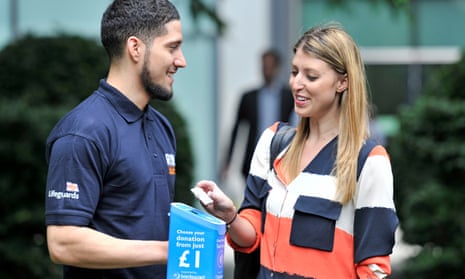The adoption of digital technology in the charity fundraising sector is still in its infancy, with even the bigger organisations only at the start of their journey.
According to Blackbaud’s 2016 Charitable Giving Report, a mere 7.2% of all individual donations in the UK were made online. Of those online donations, however, 17% were made using mobile devices – a jump of eight percentage points since 2014. This implies that such usage will grow in importance.
Grant Morgan, chief executive of Louis Kennedy, a corporate social responsibility and cause-based marketing consultancy, says: “We have a disenfranchised millennium community, not brought up on giving but on technology, so we need to find ways to engage and encourage them to give using the devices they understand.”
This situation is particularly true in light of the controversy over fundraising websites taking fees from public donations to fund their running costs.
But small organisations, which make up a significant part of the third sector, have also traditionally faced a number of challenges in grasping the digital nettle. These range from a lack of resources and tech expertise, to a reluctance to change.
Even the bigger charities have been slow to react. Beyond creating websites and becoming more active on social media to encourage individuals to donate, most still generate the majority of their money from more traditional, physical fundraising activities, including mass sponsorship events such as marathons.
Things are gradually starting to change. To extend its reach, the UN’s World Food Programme released an easy-to-use mobile app at the end of 2015 called Share the Meal. By simply tapping on their phone, donors can make a $0.50 on-the-spot micropayment to feed a child for a day. The total number of shared meals to date has reached nearly 13m.
Oxfam is the first to use digital technology not simply as a vehicle for driving donations, but also for building a relationship with donors while boosting its brand in the process.
For instance, at festivals, the organisation now uses WorkMobile’s data capture system rather than paper-based forms to record the details of new supporters, including audio files and photos of them getting involved in campaigns. These pictures are subsequently texted to each individual as a “thank you”, but because they are often posted on social media, they also extend the charity’s reach.
An even more important means of building trust is the charity’s My Oxfam app. Not only can supporters use it to control the amount they give each month, they can also view their donation history, see a map to show where the money is being spent and read stories illustrating the impact of their contribution.
As Michelle Wright, founder and chief executive of Cause4, a strategic consultancy for charities, says: “Most people giving to a charity don’t just want a quick transaction – they’re looking for a more personal connection, so this kind of approach definitely makes sense in terms of the millennium mindset.”
Contactless payments: ‘It was great … it made it easy for people to give’
Eleven charities have participated in a trial of contactless technology in the form of portable collection boxes. While shaped like traditional charity boxes to accept coins and notes, they were also equipped with a contactless reader and chip-and-pin terminal.
The four-month trial, which was kicked off by Barclaycard in September 2016, included Barnardo’s, Oxfam and the Royal British Legion and involved 100 of the boxes. During the pilot, Oxfam used the portable boxes at railway stations and in the stores of its supermarket partner, Sainsbury’s. Matt Jerwood, head of digital fundraising at Oxfam GB, says: “It was great as it made it easy for people to give quickly and removed obstacles to donating.”
In fact, the trial found that supporters who made contactless payments tended to give three times as much as the average cash donor who typically handed over £1. Barclaycard claims the technology could earn charities an extra £80m a year. Research it commissioned from pollster YouGov indicated that one in seven people fail to donate as they no longer carry cash.
But Jerwood plans to reserve judgment on committing to the technology until he learns how much each unit costs and understands if the approach is value for money.
“Take-up was limited,” he says. “It’s not going to become a core income stream but it was useful to have in the mix due to the novelty of people being able to pay by mobile. So it was a nice thing to do, but cash is still winning.”
